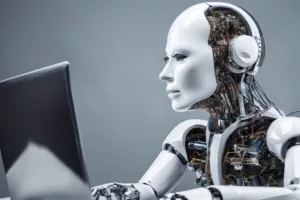
The integration of Artificial Intelligence into the entertainment industry is poised to redefine the concept of celebrity, amplifying the reach and influence of the world's biggest stars.
With the advent of artificial intelligence (AI), the entertainment industry is bracing for another seismic shift. The impact of AI on the industry is not just limited to the creation of content, but extends to the very definition of stardom. From Hollywood to the music charts, AI is set to revolutionize the way we perceive and interact with celebrities, giving rise to the era of the ‘omnistar.'
The Evolution of Stardom: From the 18th Century to AI
The concept of stardom has evolved significantly over the centuries, with technology playing a crucial role in its transformation. The rise of reading in the 18th century, the advent of film and radio, and the invention of television all served to amplify the reach of celebrities. Now, AI is poised to take this to the next level, enabling celebrities to be omnipresent across all markets and formats.
AI and the Paradox of the Internet Age
Despite the proliferation of user-generated content on platforms like YouTube and TikTok, the biggest hits by the biggest artists have only grown bigger. This trend is expected to intensify with the integration of AI, as it promises even more content and higher search costs for audiences, who will naturally gravitate towards the biggest stars.
The Omnipresence of Megastars
AI equips megastars with the ability to be truly omnipresent for their fans. AI-powered dubbing, for instance, allows actors to speak to foreign audiences in their own voice. In-demand actors can overcome scheduling conflicts with the help of AI, performing alongside each other without being physically present. Furthermore, digital enhancements can extend actors' shelf-life and even enable posthumous performances.
Emerging Formats and Monetization Opportunities
The biggest stars will also be able to engage with their fans through formats that are only beginning to emerge. From selling out arenas with digital avatars to launching celebrity-voiced chatbots, the opportunities for monetization are vast. However, these come with their own set of challenges, particularly in terms of copyright protection.
AI and the Creative Process
While AI excels at remixing and regurgitating old material, it struggles with generating fresh, captivating content. This could potentially lead to a saturation of tried-and-tested ideas, as studios and labels aim to minimize risk. However, the entertainment market is self-correcting, and audiences have the power to dictate trends.
Conclusion: As we enter the age of the omnistar, it remains to be seen how audiences will respond to this new era of stardom. While AI promises an unprecedented level of engagement with celebrities, it may also lead to a saturation of content. However, the power ultimately lies with the audience, who can shape the future of the industry with their preferences and consumption patterns. As such, the rise of the omnistar presents both an exciting opportunity and a significant challenge for the entertainment industry.

George Smith, with over a decade in tech journalism, excels in breaking down emerging tech trends. His work, spanning tech blogs and print, combines in-depth analysis with clarity, appealing to a wide readership. George's pieces often explore technology's societal impact, showcasing his foresight in industry trends.







